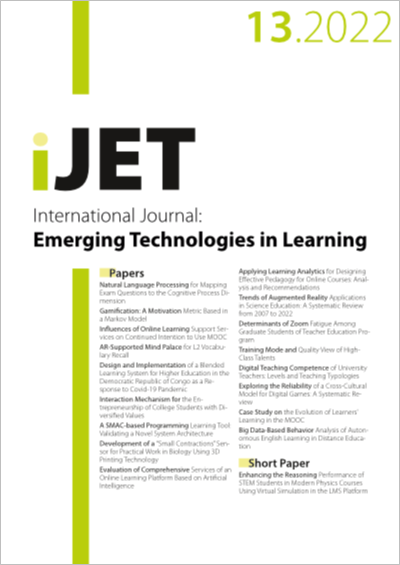Natural Language Processing for Mapping Exam Questions to the Cognitive Process Dimension
DOI:
https://doi.org/10.3991/ijet.v17i13.29095Keywords:
Natural Language Processing, exam questions, cognitive process dimension, Revised Bloom's TaxonomyAbstract
Exam questions as a test instrument to measure educational success must have good quality. This quality can be measured by the level of cognition expected of students. The level of cognition reflects the mastery of learning materials as a form of evaluation of the teaching and learning process outlined in the curriculum. For this reason, the exam questions need to be mapped into the cognitive process dimensions, namely based on the categories in the Revised Bloom's Taxonomy (RBT). The mapping method used is Natural Language Processing (NLP) as one of the fields of Artificial Intelligence development. The stages in this mapping are pre-processing, including tokenization, stemming, stop-word removal, and feature extraction using POS Tagging. The output of this mapping process is in the form of categories of test items into RBT: remembering (C1), understanding (C2), applying (C3), analyzing (C4), evaluating (C5), and creating (C6). The classification results obtained information that the exam questions prepared were still dominated at the C2 cognitive level, which was indicated by the use of operational verbs in the understanding category. The results of testing the method used produce an accuracy of 82.22%. Thus, the NLP method can classify test items into Revised Bloom's Taxonomy to determine the dimensions of students' cognitive processes.
Downloads
Published
How to Cite
Issue
Section
License
Copyright (c) 2022 Hindayati Mustafidah, Suwarsito Suwarsito, Tito Pinandita

This work is licensed under a Creative Commons Attribution 4.0 International License.



